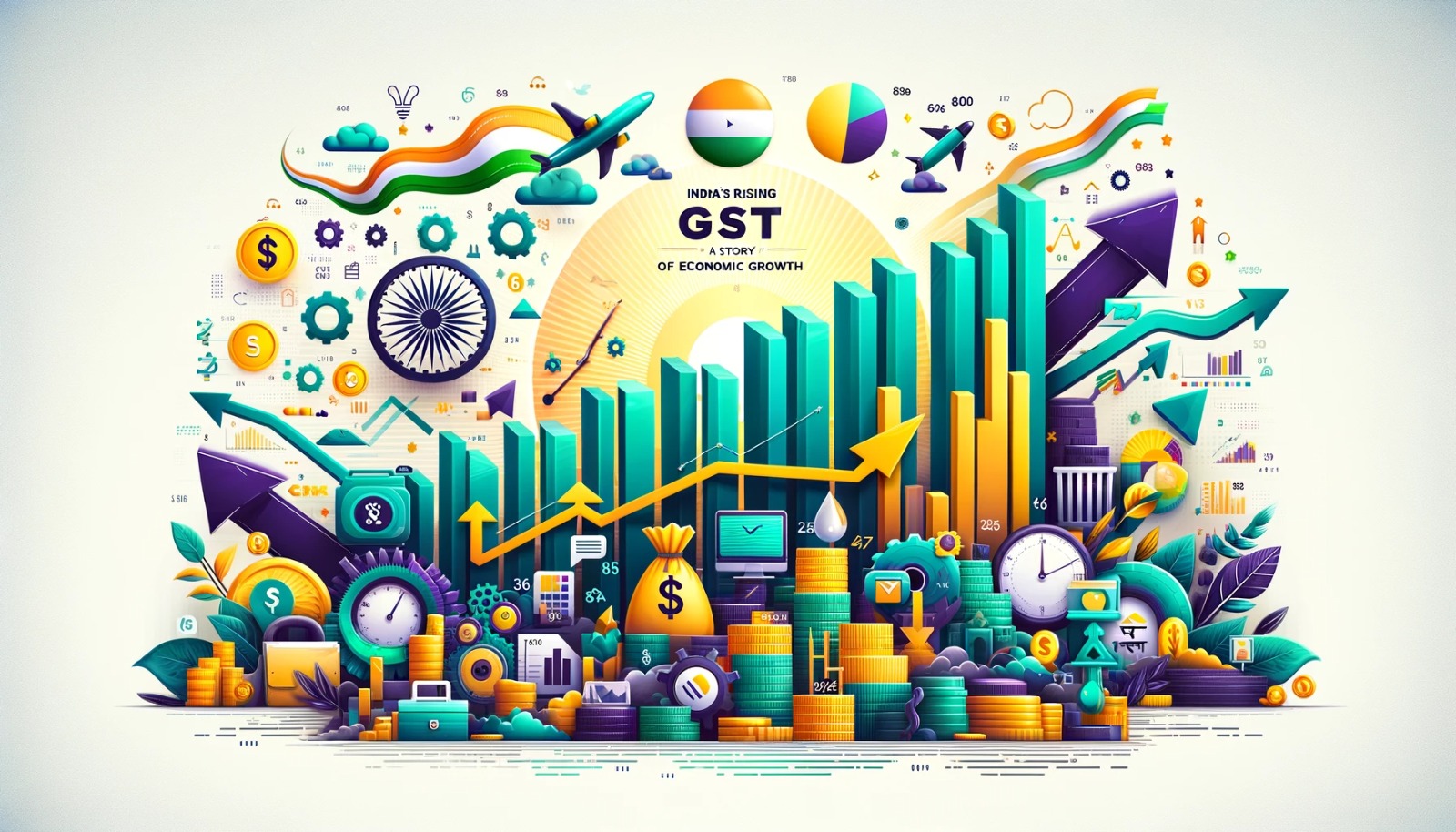
India’s Goods and Services Tax (GST) collections as evidenced by the December numbers, are showing a consistent upward trajectory; they are not just figures in financial reports but reflective of a deeper, more profound economic transformation. The steady rise in GST collections is a testament to the increasing formalisation of the Indian economy and a harbinger of sustained economic growth across various sectors.
Understanding the Surge in GST Collections
The Growth Trajectory
The government’s GST collections soared by 10 percent year-on-year in December 2023, hitting Rs 1.65 lakh crore. Remarkably, this marks the tenth consecutive month where collections have exceeded the Rs 1.5-lakh-crore threshold. From an average of under Rs 1 lakh crore per month in 2017-18, the first year of its implementation, to averaging Rs 1.51 lakh crore in 2022-23, GST collections have shown remarkable growth.
In December 2023, the breakup of collections included Central GST at Rs 30,443 crore, State GST at Rs 37,935 crore, Integrated GST at Rs 84,255 crore, and cess at Rs 12,249 crore. Post settlements, the total revenue amounted to Rs 70,501 crore for the Centre and Rs 71,587 crore for State GST.
Implications for the Economy
The consistent rise in GST collections indicates a shift towards the formalisation of the Indian economy. As more businesses become compliant and enter the formal sector, tax revenues naturally see an uptick. This formalization is pivotal for long-term sustainable economic growth and stability.
This uptrend in GST collections is indicative of broad-based economic growth. It suggests that multiple sectors are experiencing robust activity, contributing to the overall health of the economy.
The Ripple Effect on Investments and Wealth Growth
Stock Investments: Reading Between the Lines
Investment Opportunities: For investors, especially those interested in stock investments, these figures provide valuable insights. Sectors contributing significantly to GST collections can be potential areas for investment. Companies in these sectors might be experiencing growth, making them attractive for stock investments. The following sectors are seeing good traction.
- Manufacturing Boom: The manufacturing sector has been witnessing a consistent rise in GST contributions, driven by factors like PLI schemes, domestic demand, and export competitiveness. Investing in companies operating in sectors like auto, textiles, steel, and pharmaceuticals could prove rewarding.
- Green Energy Push: The government’s strong focus on renewable energy, as evident in increased GST collections from this sector, opens up promising opportunities. One can consider companies involved in solar power generation, wind energy, and electric vehicle manufacturing; however one must also ensure that they meet quality criteria else the huge capex that they involve and the competition rush may not leave much on the table for the investors.
- Digital Acceleration: India’s rapid digital adoption is reflected in growing GST collections from IT and telecom sectors. Investing in companies offering (or leveraging) cloud computing, cybersecurity, e-commerce, and fintech solutions could be worthwhile.
- Infrastructure Development: The government’s commitment to infrastructure development is reflected in rising GST collections from construction materials and related sectors. Companies engaged in cement, steel, and infrastructure projects could be potential investment picks.
Long-term Wealth Creation: Understanding which sectors are driving GST collections helps investors make informed decisions. Investing in growth sectors can be a key strategy in wealth creation, especially for long-term investors.
Navigating Through Investment Choices
Which Stocks to Invest In?: The rise in GST collections can guide investors towards sectors that are currently thriving. For instance, if the manufacturing sector shows significant GST contributions, it might be worthwhile to look into companies within this sector for investment.
While these indicators are helpful, investors should aim for a diversified portfolio and keep in mind the following:
- Trend Analysis: Don’t solely rely on GST contributions; analyse underlying trends within sectors. Look for factors like policy changes, technological advancements, consumer demand, and global dynamics before making investment decisions.
- Diversification is Key: While focusing on promising sectors, remember the importance of a diversified portfolio. Spread your investments across different sectors, company sizes, and asset classes to manage risk and maximise long-term returns.
- Seek Professional Guidance: Investing in the stock market involves inherent risks. Consult with a SEBI Registered Investment Advisor or a SEBI Registered Portfolio Manager before making any investment decisions based on this analysis. They can help you tailor your portfolio based on your individual risk tolerance and financial goals.
The Road Ahead: GST Collections and Economic Outlook
Future Projections
The government anticipates a 12 percent rise in GST collections in the current financial year. This projection, if met, will further cement the role of GST as a significant contributor to the country’s revenue stream.
The consistent rise in GST collections is a positive signal for India’s economic growth. It underlines the resilience and dynamism of the Indian market, making it an attractive destination for both domestic and foreign investments.
Conclusion
In conclusion, the rising GST collections in India are a robust indicator of the economy’s gradual shift towards greater formalisation and sectoral growth. For investors looking to grow wealth through stock investments, these trends offer crucial insights into which sectors are thriving. It underscores the importance of staying informed and adaptive in investment strategies, capitalising on emerging trends for long-term wealth creation. As India continues on its path of economic development, the GST collections serve not only as a financial metric but as a key indicator of economic progress and potential.






















